IT
-
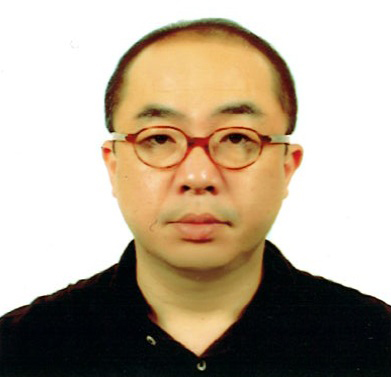 Prof. Song Chong received the IEEE William R. Bennett Prize Paper Award
The IEEE (Institute of Electrical and Electronics Engineers) Communications Society (ComSoc), a renowned global network of professionals with a common interest in advancing communications technologies, has announced the winner of the 2013 William R. Bennett Prize in the field of communications networking. The prize was given to a Korean research team led by Song Chong, Professor of Electrical Engineering at KAIST and Injong Rhee, Professor of Computer Science at North Carolina State University. In addition, Dr. Minsu Shin, Dr. Seongik Hong, and Dr. Seong Joon Kim of Samsung Electronics Co., Ltd. as well as Professor Kyunghan Lee from Ulsan National Institute of Science and Technology were recognized for their contribution.
The William R. Bennett Prize for communications networking has been awarded each year since 1994 in recognition of the best paper published in any journal financially sponsored or co-sponsored by ComSoc in the previous three calendar years. Only one paper per year is selected based on its quality, originality, scientific citation index, and peer reviews. Among the previous award winners are Robert Gallager of MIT, and Steven Low of the California Institute of Technology, and Kang G. Shin of the University of Michigan.
The Korean research team’s paper, On the Levy-Walk Nature of Human Mobility, was published in the June 2011 issue of IEEE/ACM Transactions on Networking, a bimonthly journal co-sponsored by the IEEE ComSoc, the IEEE Computer Society, and the Association for Computing Machinery (ACM) with its Special Interest Group on Data Communications (SIGCOMM).
In the paper, the research team proposed a new statistical model to effectively analyze the pattern of individual human mobility in daily life. The team handed out GPS (global positioning system) devices to 100 participants residing in five different university campuses in Korea and the US and collected data on their movements for 226 days. The mobility pattern obtained from the experiment predicted accurately how the participants actually moved around during their routines. Since publication, the paper has been cited by other papers approximately 350 times.
The team’s research results will apply to many fields such as the prevention and control of epidemics, the design of efficient communications networks, and the development of urban and transportation system.
The research team received the award on June 10th at the 2013 IEEE International Conference on Communications (ICC) held in Budapest, Hungary, from June 9-13, 2013.
Professor Song Chong
2013.07.06 View 15628
Prof. Song Chong received the IEEE William R. Bennett Prize Paper Award
The IEEE (Institute of Electrical and Electronics Engineers) Communications Society (ComSoc), a renowned global network of professionals with a common interest in advancing communications technologies, has announced the winner of the 2013 William R. Bennett Prize in the field of communications networking. The prize was given to a Korean research team led by Song Chong, Professor of Electrical Engineering at KAIST and Injong Rhee, Professor of Computer Science at North Carolina State University. In addition, Dr. Minsu Shin, Dr. Seongik Hong, and Dr. Seong Joon Kim of Samsung Electronics Co., Ltd. as well as Professor Kyunghan Lee from Ulsan National Institute of Science and Technology were recognized for their contribution.
The William R. Bennett Prize for communications networking has been awarded each year since 1994 in recognition of the best paper published in any journal financially sponsored or co-sponsored by ComSoc in the previous three calendar years. Only one paper per year is selected based on its quality, originality, scientific citation index, and peer reviews. Among the previous award winners are Robert Gallager of MIT, and Steven Low of the California Institute of Technology, and Kang G. Shin of the University of Michigan.
The Korean research team’s paper, On the Levy-Walk Nature of Human Mobility, was published in the June 2011 issue of IEEE/ACM Transactions on Networking, a bimonthly journal co-sponsored by the IEEE ComSoc, the IEEE Computer Society, and the Association for Computing Machinery (ACM) with its Special Interest Group on Data Communications (SIGCOMM).
In the paper, the research team proposed a new statistical model to effectively analyze the pattern of individual human mobility in daily life. The team handed out GPS (global positioning system) devices to 100 participants residing in five different university campuses in Korea and the US and collected data on their movements for 226 days. The mobility pattern obtained from the experiment predicted accurately how the participants actually moved around during their routines. Since publication, the paper has been cited by other papers approximately 350 times.
The team’s research results will apply to many fields such as the prevention and control of epidemics, the design of efficient communications networks, and the development of urban and transportation system.
The research team received the award on June 10th at the 2013 IEEE International Conference on Communications (ICC) held in Budapest, Hungary, from June 9-13, 2013.
Professor Song Chong
2013.07.06 View 15628 -
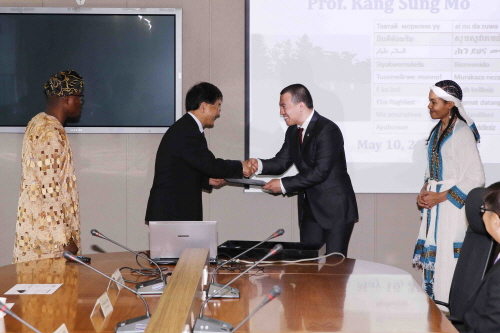 Foreign graduates donate to development fund for six years
International graduates of the Global IT Technology Graduate School at KAIST have continued a tradition of giving something back to their alma mater.
On May 10th, President Steve Kang held a donation ceremony with 12 donors.
Started in 2008, the graduates, mostly consisted of government officials from developing countries, have raised a development fund for KAIST, and in the past six years, a total of 81 graduates donated USD 10,000.
“KAIST provided me with an excellent education and research environment during my studies. I’m glad that I can have an opportunity to help my juniors and the university,” said Naryn Kenzhaliyev of Kazakhstan, a graduate present at the ceremony.
“Every year, these students voluntarily give when they are about to graduate. We feel proud and greatly appreciated for their philanthropic efforts,” said Professor Jae-Jung Noh, responsible for the global IT technology graduate program.
Established in 2006, the Global IT Technology Graduate School has attracted IT specialists from Korea and abroad, offering master’s and doctoral degrees. The school has invited many public servants in developing countries whose expertise lies in IT technology.
2013.07.04 View 7057
Foreign graduates donate to development fund for six years
International graduates of the Global IT Technology Graduate School at KAIST have continued a tradition of giving something back to their alma mater.
On May 10th, President Steve Kang held a donation ceremony with 12 donors.
Started in 2008, the graduates, mostly consisted of government officials from developing countries, have raised a development fund for KAIST, and in the past six years, a total of 81 graduates donated USD 10,000.
“KAIST provided me with an excellent education and research environment during my studies. I’m glad that I can have an opportunity to help my juniors and the university,” said Naryn Kenzhaliyev of Kazakhstan, a graduate present at the ceremony.
“Every year, these students voluntarily give when they are about to graduate. We feel proud and greatly appreciated for their philanthropic efforts,” said Professor Jae-Jung Noh, responsible for the global IT technology graduate program.
Established in 2006, the Global IT Technology Graduate School has attracted IT specialists from Korea and abroad, offering master’s and doctoral degrees. The school has invited many public servants in developing countries whose expertise lies in IT technology.
2013.07.04 View 7057 -
 KAIST Placed 3rd in the World's Best 100 Emerging Universities
The Times Higher Education (THE) published its world university rankings on June 20, 2013. It is a list of the best 100 universities whose histories are 50 years old or younger. KAIST was ranked 3rd in the list, two places up from the 5th last year. Forbes and Reuters carried a story on the top ten emerging universities out of the listed 100 institutions, highlighting strong showings in the Asian region. For the articles, please see the attached file (Forbes) or click the link (Reuters) below:
http://www.reuters.com/article/2013/06/19/education-university-rankings-idUSL2N0EU1HZ20130619
2013.06.22 View 8438
KAIST Placed 3rd in the World's Best 100 Emerging Universities
The Times Higher Education (THE) published its world university rankings on June 20, 2013. It is a list of the best 100 universities whose histories are 50 years old or younger. KAIST was ranked 3rd in the list, two places up from the 5th last year. Forbes and Reuters carried a story on the top ten emerging universities out of the listed 100 institutions, highlighting strong showings in the Asian region. For the articles, please see the attached file (Forbes) or click the link (Reuters) below:
http://www.reuters.com/article/2013/06/19/education-university-rankings-idUSL2N0EU1HZ20130619
2013.06.22 View 8438 -
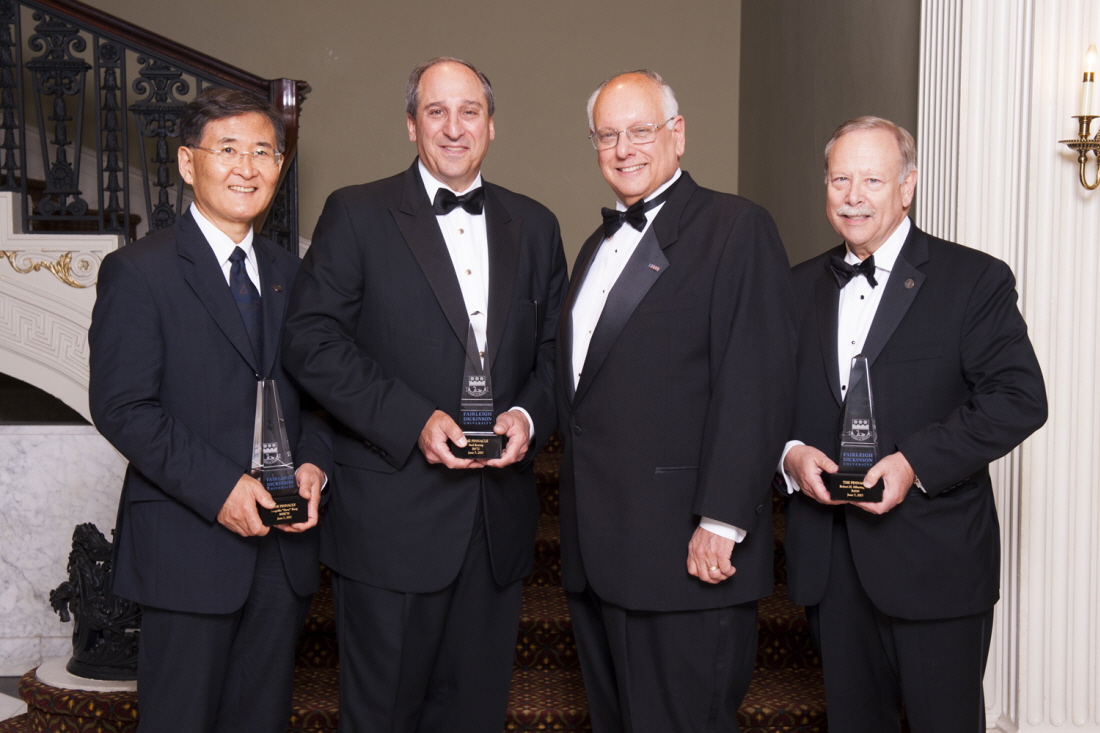 President Sung-Mo Steve Kang received an alumni award, PINNACLE, from his alma mater.
The following press release is provided by courtesy of Fairleigh Dickinson University:Teaneck, NJ (June 12, 2013) The FDU PINNACLE Society recognized the contributions and achievements of three distinguished alumni at a ceremony preceding the Charter Day reception and dinner on June 7, 2013.
This year’s PINNACLE honorees are: Sung-Mo “Steve” Kang, BSEE’70, president, Korea Advanced Institute of Science and Technology, Daejeon, South Korea; Neil Koenig, BS’72, co-founder and managing partner, Imowitz Koenig & Co., LLP, New York City; and Robert Silberling, BA’69, special adviser to the CEO, T&M Protection Resources, LLC, New York City.
The annual class of The PINNACLE is chosen by past inductees, based on the following criteria: success or distinction in one’s chosen field of endeavor, significant contributions to society and humanity through public or humanitarian service and outstanding service to the University or reflection of the unique character of FDU in one’s life.The PINNACLE was introduced by Fairleigh Dickinson University in 1989 to formally recognize and acknowledge the contributions and achievements of its most distinguished alumni. Today’s ceremony honors the newest members of what has become an ongoing organization for leading FDU alumni. Since its founding in 1942, the University has been committed to providing its students with the education, values and encouragement needed to become active and contributing members of the larger world community. More than 118,000 FDU alumni have gone on to enrich and improve society through their work, volunteer activities and personal actions. Among their ranks, a select few have achieved the highest possible level of performance — the pinnacle — in their respective pursuits.
From left are PINNACLE inductees Sung-Mo “Steve” Kang, Neil Koenig, FDU President Sheldon Drucker and Robert Silberling. Photo Credit: Fairleigh Dickinson University
2013.06.14 View 8246
President Sung-Mo Steve Kang received an alumni award, PINNACLE, from his alma mater.
The following press release is provided by courtesy of Fairleigh Dickinson University:Teaneck, NJ (June 12, 2013) The FDU PINNACLE Society recognized the contributions and achievements of three distinguished alumni at a ceremony preceding the Charter Day reception and dinner on June 7, 2013.
This year’s PINNACLE honorees are: Sung-Mo “Steve” Kang, BSEE’70, president, Korea Advanced Institute of Science and Technology, Daejeon, South Korea; Neil Koenig, BS’72, co-founder and managing partner, Imowitz Koenig & Co., LLP, New York City; and Robert Silberling, BA’69, special adviser to the CEO, T&M Protection Resources, LLC, New York City.
The annual class of The PINNACLE is chosen by past inductees, based on the following criteria: success or distinction in one’s chosen field of endeavor, significant contributions to society and humanity through public or humanitarian service and outstanding service to the University or reflection of the unique character of FDU in one’s life.The PINNACLE was introduced by Fairleigh Dickinson University in 1989 to formally recognize and acknowledge the contributions and achievements of its most distinguished alumni. Today’s ceremony honors the newest members of what has become an ongoing organization for leading FDU alumni. Since its founding in 1942, the University has been committed to providing its students with the education, values and encouragement needed to become active and contributing members of the larger world community. More than 118,000 FDU alumni have gone on to enrich and improve society through their work, volunteer activities and personal actions. Among their ranks, a select few have achieved the highest possible level of performance — the pinnacle — in their respective pursuits.
From left are PINNACLE inductees Sung-Mo “Steve” Kang, Neil Koenig, FDU President Sheldon Drucker and Robert Silberling. Photo Credit: Fairleigh Dickinson University
2013.06.14 View 8246 -
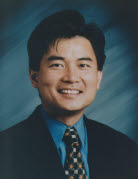 Professor Jay H. Lee to receive the 2013 AIChE CAST Computing in Chemical Engineering Award
Professor Jay H. Lee of Chemical and Biomolecular Engineering Department at KAIST has won the 2013 Computing in Chemical Engineering Award of AIChE"s CAST Division (AIChE, American Institute of Chemical Engineers and CAST, Computing & Systems Technology Division).
The CAST Computing in Chemical Engineering Award, sponsored by The Dow Chemical Company, is annually given to an individual who has made outstanding contributions in the application of computing and systems technology to chemical engineering.Professor Lee has been recognized for his pioneering research contributions for “novel paradigms for much improved and robust model predictive control in industrial processes.” He is currently the Head of Chemical and Biomolecular Engineering Department and Director of Brain Korea (BK) 21 Program at the department. BK21 is the Korean government’s initiative to support the growth of research universities in the nation and foster highly trained master’s and doctoral students as well as researchers.
The CAST Computing in Chemical Engineering Award will be presented to Professor Jay H. Lee at the CAST Division dinner to be held at the AIChE Annual Meeting this November in San Francisco, where he will also deliver the after dinner lecture associated with this award.
2013.06.12 View 11722
Professor Jay H. Lee to receive the 2013 AIChE CAST Computing in Chemical Engineering Award
Professor Jay H. Lee of Chemical and Biomolecular Engineering Department at KAIST has won the 2013 Computing in Chemical Engineering Award of AIChE"s CAST Division (AIChE, American Institute of Chemical Engineers and CAST, Computing & Systems Technology Division).
The CAST Computing in Chemical Engineering Award, sponsored by The Dow Chemical Company, is annually given to an individual who has made outstanding contributions in the application of computing and systems technology to chemical engineering.Professor Lee has been recognized for his pioneering research contributions for “novel paradigms for much improved and robust model predictive control in industrial processes.” He is currently the Head of Chemical and Biomolecular Engineering Department and Director of Brain Korea (BK) 21 Program at the department. BK21 is the Korean government’s initiative to support the growth of research universities in the nation and foster highly trained master’s and doctoral students as well as researchers.
The CAST Computing in Chemical Engineering Award will be presented to Professor Jay H. Lee at the CAST Division dinner to be held at the AIChE Annual Meeting this November in San Francisco, where he will also deliver the after dinner lecture associated with this award.
2013.06.12 View 11722 -
 KAIST Department of Mechanical Engineering Ranked in 19th Place
- Ranked in 19th place in 2013 Quacquarelli Symonds (QS) World University Rankings by Engineering, Mechanical, Aeronautical and Manufacturing Subjects -
KAIST ranked 19th in 2013 QS World University Rankings by Subject in Engineering, Mechanical, Aeronautical and Manufacturing Subjects. This is great progress compared to last year’s 51st-100th rank.
The 2013 QS World University Rankings used four indicators, including academic reputation, employer reputation, citations per paper, and H-index citations, to assess 2,858 universities in the world, and evaluated up to 200th place in 30 academic subjects.
KAIST earned high remarks from the H-index citations indicator, which is a new criteria introduced in the employer reputation rating. Moreover, the employer reputation section has risen sharply compared to the previous year. The H-index measures qualitatively and quantitatively the research outcomes of the researchers and assesses the number of papers written per professor and the average citation frequency of the papers.
The proportions of the indicators differ by subjects. For the mechanical engineering field, they weigh 40%, 30%, 15%, and 15%, respectively.
Rank
Academic
Employer
Citations per paper
H-index Citations
Score
19 (51-100)
68.1 (78.9)
89.1 (60.2)
84.6 (83.1)
93.1 (N/A)
80.4 (74.6)
2013.06.10 View 8497
KAIST Department of Mechanical Engineering Ranked in 19th Place
- Ranked in 19th place in 2013 Quacquarelli Symonds (QS) World University Rankings by Engineering, Mechanical, Aeronautical and Manufacturing Subjects -
KAIST ranked 19th in 2013 QS World University Rankings by Subject in Engineering, Mechanical, Aeronautical and Manufacturing Subjects. This is great progress compared to last year’s 51st-100th rank.
The 2013 QS World University Rankings used four indicators, including academic reputation, employer reputation, citations per paper, and H-index citations, to assess 2,858 universities in the world, and evaluated up to 200th place in 30 academic subjects.
KAIST earned high remarks from the H-index citations indicator, which is a new criteria introduced in the employer reputation rating. Moreover, the employer reputation section has risen sharply compared to the previous year. The H-index measures qualitatively and quantitatively the research outcomes of the researchers and assesses the number of papers written per professor and the average citation frequency of the papers.
The proportions of the indicators differ by subjects. For the mechanical engineering field, they weigh 40%, 30%, 15%, and 15%, respectively.
Rank
Academic
Employer
Citations per paper
H-index Citations
Score
19 (51-100)
68.1 (78.9)
89.1 (60.2)
84.6 (83.1)
93.1 (N/A)
80.4 (74.6)
2013.06.10 View 8497 -
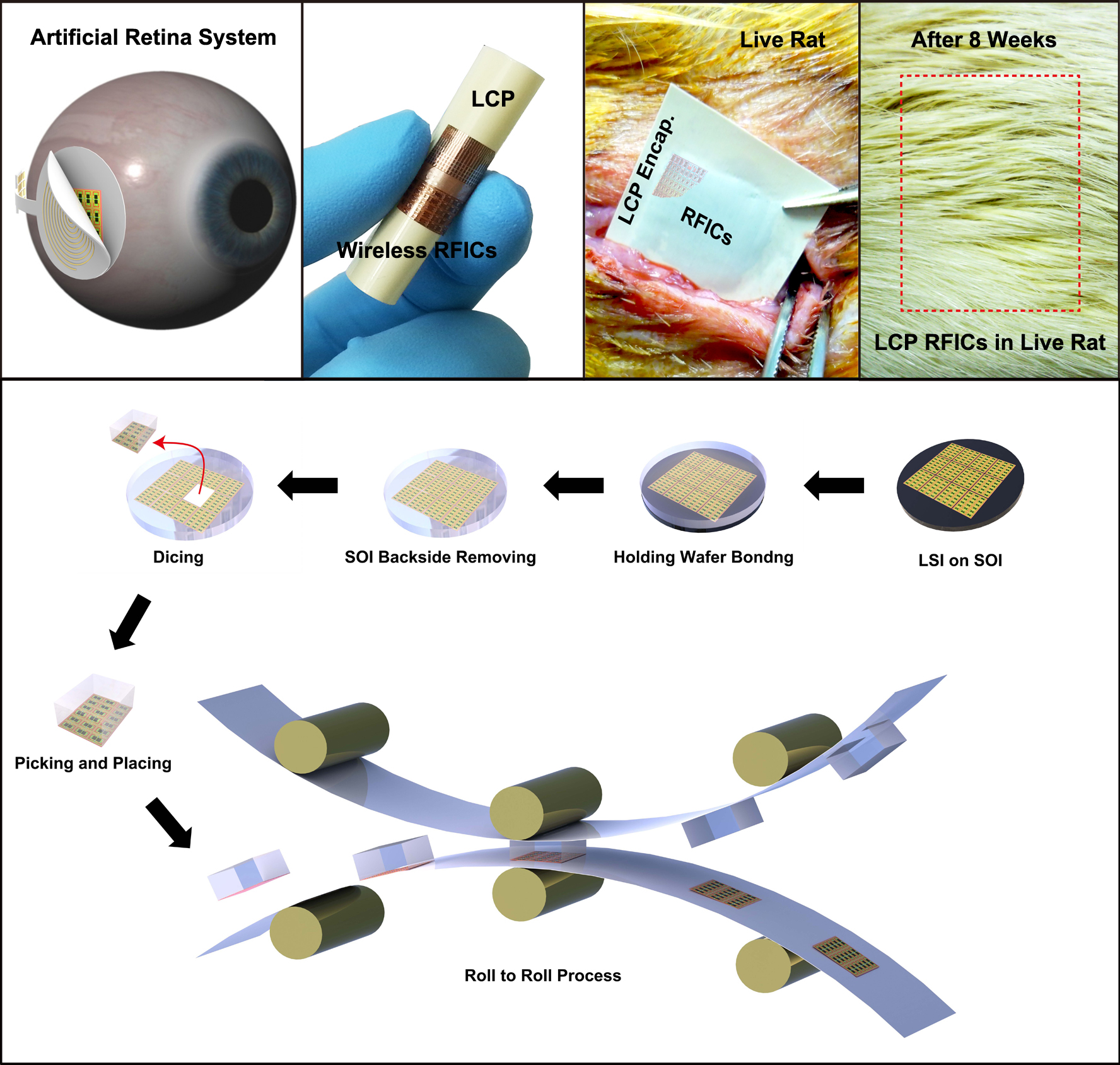 A KAIST research team developed in vivo flexible large scale integrated circuits
Daejeon, Republic of Korea, May 6th, 2013–-A team led by Professor Keon Jae Lee from the Department of Materials Science and Engineering at KAIST has developed in vivo silicon-based flexible large scale integrated circuits (LSI) for bio-medical wireless communication.
Silicon-based semiconductors have played significant roles in signal processing, nerve stimulation, memory storage, and wireless communication in implantable electronics. However, the rigid and bulky LSI chips have limited uses in in vivo devices due to incongruent contact with the curvilinear surfaces of human organs. Especially, artificial retinas recently approved by the Food and Drug Administration (refer to the press release of FDA"s artificial retina approval) require extremely flexible and slim LSI to incorporate it within the cramped area of the human eye.
Although several research teams have fabricated flexible integrated circuits (ICs, tens of interconnected transistors) on plastics, their inaccurate nano-scale alignment on plastics has restricted the demonstration of flexible nano-transistors and their large scale interconnection for in vivo LSI applications such as main process unit (MPU), high density memory and wireless communication. Professor Lee"s team previously demonstrated fully functional flexible memory using ultrathin silicon membranes (Nano Letters, Flexible Memristive Memory Array on Plastic Substrates), however, its integration level and transistor size (over micron scale) have limited functional applications for flexible consumer electronics.
Professor Keon Jae Lee"s team fabricated radio frequency integrated circuits (RFICs) interconnected with thousand nano-transistors on silicon wafer by state-of-the-art CMOS process, and then they removed the entire bottom substrate except top 100 nm active circuit layer by wet chemical etching. The flexible RF switches for wireless communication were monolithically encapsulated with biocompatible liquid crystal polymers (LCPs) for in vivo bio-medical applications. Finally, they implanted the LCP encapsulated RFICs into live rats to demonstrate the stable operation of flexible devices under in vivo circumstances.
Professor Lee said, "This work could provide an approach to flexible LSI for an ideal artificial retina system and other bio-medical devices. Moreover, the result represents an exciting technology with the strong potential to realize fully flexible consumer electronics such as application processor (AP) for mobile operating system, high-capacity memory, and wireless communication in the near future."
This result was published in the May online issue of the American Chemical Society"s journal, ACS Nano (In vivo Flexible RFICs Monolithically Encapsulated with LCP). They are currently engaged in commercializing efforts of roll-to-roll printing of flexible LSI on large area plastic substrates.
Movie at Youtube Link: Fabrication process for flexible LSI for flexible display, wearable computer and artificial retina for in vivo biomedical application
http://www.youtube.com/watch?v=5PpbM7m2PPs&feature=youtu.be
Applications of in Vivo Flexible Large Scale Integrated Circuits
Top: In vivo flexible large scale integrated circuits (LSI); Bottom: Schematic of roll-to-roll printing of flexible LSI on large area plastics.
2013.06.09 View 15162
A KAIST research team developed in vivo flexible large scale integrated circuits
Daejeon, Republic of Korea, May 6th, 2013–-A team led by Professor Keon Jae Lee from the Department of Materials Science and Engineering at KAIST has developed in vivo silicon-based flexible large scale integrated circuits (LSI) for bio-medical wireless communication.
Silicon-based semiconductors have played significant roles in signal processing, nerve stimulation, memory storage, and wireless communication in implantable electronics. However, the rigid and bulky LSI chips have limited uses in in vivo devices due to incongruent contact with the curvilinear surfaces of human organs. Especially, artificial retinas recently approved by the Food and Drug Administration (refer to the press release of FDA"s artificial retina approval) require extremely flexible and slim LSI to incorporate it within the cramped area of the human eye.
Although several research teams have fabricated flexible integrated circuits (ICs, tens of interconnected transistors) on plastics, their inaccurate nano-scale alignment on plastics has restricted the demonstration of flexible nano-transistors and their large scale interconnection for in vivo LSI applications such as main process unit (MPU), high density memory and wireless communication. Professor Lee"s team previously demonstrated fully functional flexible memory using ultrathin silicon membranes (Nano Letters, Flexible Memristive Memory Array on Plastic Substrates), however, its integration level and transistor size (over micron scale) have limited functional applications for flexible consumer electronics.
Professor Keon Jae Lee"s team fabricated radio frequency integrated circuits (RFICs) interconnected with thousand nano-transistors on silicon wafer by state-of-the-art CMOS process, and then they removed the entire bottom substrate except top 100 nm active circuit layer by wet chemical etching. The flexible RF switches for wireless communication were monolithically encapsulated with biocompatible liquid crystal polymers (LCPs) for in vivo bio-medical applications. Finally, they implanted the LCP encapsulated RFICs into live rats to demonstrate the stable operation of flexible devices under in vivo circumstances.
Professor Lee said, "This work could provide an approach to flexible LSI for an ideal artificial retina system and other bio-medical devices. Moreover, the result represents an exciting technology with the strong potential to realize fully flexible consumer electronics such as application processor (AP) for mobile operating system, high-capacity memory, and wireless communication in the near future."
This result was published in the May online issue of the American Chemical Society"s journal, ACS Nano (In vivo Flexible RFICs Monolithically Encapsulated with LCP). They are currently engaged in commercializing efforts of roll-to-roll printing of flexible LSI on large area plastic substrates.
Movie at Youtube Link: Fabrication process for flexible LSI for flexible display, wearable computer and artificial retina for in vivo biomedical application
http://www.youtube.com/watch?v=5PpbM7m2PPs&feature=youtu.be
Applications of in Vivo Flexible Large Scale Integrated Circuits
Top: In vivo flexible large scale integrated circuits (LSI); Bottom: Schematic of roll-to-roll printing of flexible LSI on large area plastics.
2013.06.09 View 15162 -
 6th TEDxKAIST Held on May 11, 2013
The sixth TEDxKAIST (https://www.facebook.com/TEDxKAIST?fref=ts) took place on May 11, 2013. The event was held under the theme, “Choice between Birth and Death,” and the slogan, “B-C-D,” which was inspired from Jean Paul Satre’s quote, “Life is a choice between birth and death.”
The following speakers gave talks on the choices they have made and the impacts on their lives: Sonya S. Kwak, Professor of the Industrial Design Department at Ehwa Women’s University; Meoung-Seok Oh, a college student majoring in dental technology and business at Korea University; SooA Yeo, CEO of “Chalk,” a social venture company that offers talent donations; and Jeong-Won Lee, a senior researcher at Medical Imaging Laboratory, Electronics and Telecommunications Research Institute (ETRI).
According to the speakers, every day we make decisions, and these decisions affect not only our own lives, but also our society as a whole. Speakers and participants explored the underlying relations between the choices being made and the outcome resulted therefrom. Attendees also shared their experiences and ideas that helped them to make the right decision and stressed the importance of choices we make in our lives.
TEDxKAIST is an event operating under the official license of TED to hold TEDx programs based on TED’s slogan “Ideas Worth Spreading.” Since the first event took place under the theme “Science for Happiness, Happiness for Science” on September 2010, TEDxKAIST has brought together over 300 participants through five successful events.
2013.05.31 View 8761
6th TEDxKAIST Held on May 11, 2013
The sixth TEDxKAIST (https://www.facebook.com/TEDxKAIST?fref=ts) took place on May 11, 2013. The event was held under the theme, “Choice between Birth and Death,” and the slogan, “B-C-D,” which was inspired from Jean Paul Satre’s quote, “Life is a choice between birth and death.”
The following speakers gave talks on the choices they have made and the impacts on their lives: Sonya S. Kwak, Professor of the Industrial Design Department at Ehwa Women’s University; Meoung-Seok Oh, a college student majoring in dental technology and business at Korea University; SooA Yeo, CEO of “Chalk,” a social venture company that offers talent donations; and Jeong-Won Lee, a senior researcher at Medical Imaging Laboratory, Electronics and Telecommunications Research Institute (ETRI).
According to the speakers, every day we make decisions, and these decisions affect not only our own lives, but also our society as a whole. Speakers and participants explored the underlying relations between the choices being made and the outcome resulted therefrom. Attendees also shared their experiences and ideas that helped them to make the right decision and stressed the importance of choices we make in our lives.
TEDxKAIST is an event operating under the official license of TED to hold TEDx programs based on TED’s slogan “Ideas Worth Spreading.” Since the first event took place under the theme “Science for Happiness, Happiness for Science” on September 2010, TEDxKAIST has brought together over 300 participants through five successful events.
2013.05.31 View 8761 -
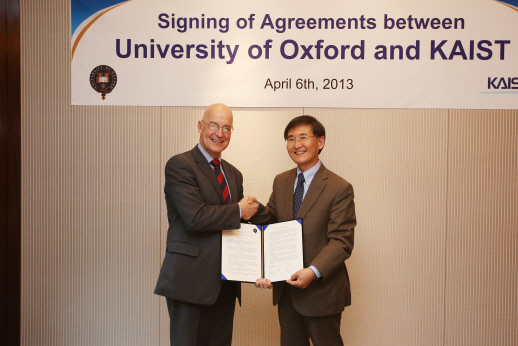 Cooperation Agreement signed between KAIST and University of Oxford
On April 6th, a Cooperation Memorandum of Understanding (MOU), including the exchange of students between two universities, was signed by KAIST and University of Oxford on April 6th.
In the MOU, KAIST and Oxford agreed to achieve mutual development through cooperation, such as joint research programs and the exchange of professors and students.
President Sung-Mo Kang stated, “This agreement will be the start of close cooperation between the two universities, and I will continue to endeavor to expand the relationship.”
Andrew Hamilton, the president of Oxford University replied, “I am well aware of the excellent quality of teaching and research of Korean students and KAIST. I hope the cooperation between KAIST and Oxford will achieve exchange at diverse levels.”
President Hamilton taught chemistry at the University of Pittsburgh and Princeton University and also served as the vice-president of Yale University. Having experience of teaching a KAIST student before, he has high praise for the ability of KAIST students.
The President of the University of Oxford, Andrew Hamilton (left), and the President of KAIST, Sung-Mo "Steve" Kang, shake hands in acknowledgement of signing the Cooperation MOU.
2013.05.20 View 7334
Cooperation Agreement signed between KAIST and University of Oxford
On April 6th, a Cooperation Memorandum of Understanding (MOU), including the exchange of students between two universities, was signed by KAIST and University of Oxford on April 6th.
In the MOU, KAIST and Oxford agreed to achieve mutual development through cooperation, such as joint research programs and the exchange of professors and students.
President Sung-Mo Kang stated, “This agreement will be the start of close cooperation between the two universities, and I will continue to endeavor to expand the relationship.”
Andrew Hamilton, the president of Oxford University replied, “I am well aware of the excellent quality of teaching and research of Korean students and KAIST. I hope the cooperation between KAIST and Oxford will achieve exchange at diverse levels.”
President Hamilton taught chemistry at the University of Pittsburgh and Princeton University and also served as the vice-president of Yale University. Having experience of teaching a KAIST student before, he has high praise for the ability of KAIST students.
The President of the University of Oxford, Andrew Hamilton (left), and the President of KAIST, Sung-Mo "Steve" Kang, shake hands in acknowledgement of signing the Cooperation MOU.
2013.05.20 View 7334 -
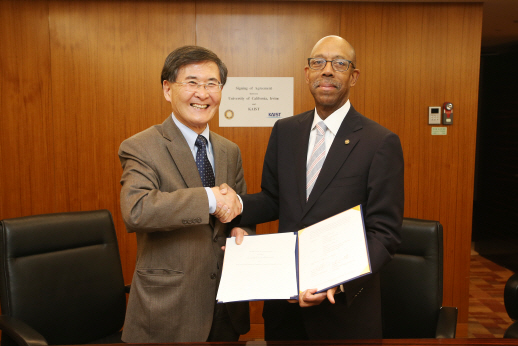 KAIST signs a Cooperation Agreement with University of California, Irvine
On April 6th, KAIST signed a cooperation memorandum of understanding (MOU) establishing academic exchanges of faculty and students with the University of California, Irvine (UC Irvine).
The MOU states that the collaboration between both universities will promote the exchange of faculty and students, as well as joint research.
Following UC Los Angeles (UCLA), Irvine became the second UC campus to make the exchange agreement with KAIST.
UC Irvine was founded in 1965, and is known as a prestigious public university composed of 13 departments, including colleges of arts, biological sciences, engineering, and humanities.
The ceremony was attended by KAIST President, Sung-Mo Kang, and UC Irvine President, Michael V. Drake, as well as Suk-Hee Kang, the former Mayor of Irvine.
KAIST President Sung-Mo "Steve" Kang (left) and President of UC Irvine Michael Drake (right) shake hands after signing the Cooperation MOU.
2013.05.20 View 7216
KAIST signs a Cooperation Agreement with University of California, Irvine
On April 6th, KAIST signed a cooperation memorandum of understanding (MOU) establishing academic exchanges of faculty and students with the University of California, Irvine (UC Irvine).
The MOU states that the collaboration between both universities will promote the exchange of faculty and students, as well as joint research.
Following UC Los Angeles (UCLA), Irvine became the second UC campus to make the exchange agreement with KAIST.
UC Irvine was founded in 1965, and is known as a prestigious public university composed of 13 departments, including colleges of arts, biological sciences, engineering, and humanities.
The ceremony was attended by KAIST President, Sung-Mo Kang, and UC Irvine President, Michael V. Drake, as well as Suk-Hee Kang, the former Mayor of Irvine.
KAIST President Sung-Mo "Steve" Kang (left) and President of UC Irvine Michael Drake (right) shake hands after signing the Cooperation MOU.
2013.05.20 View 7216 -
 KAIST hosts 2013 Wearable Computer Contest
2013 Wearable Computer Contest (WCC) will be held in early November. This year’s contest is hosted by KAIST and sponsored by Samsung Electronics.
Wearable computers are drawing attention in the IT world as a potentially convenient information and communication device for future generations, which are attached to clothing or on the body. As smartphones have grown increasingly more popular, various supporting devices are being developed. The IT industry is targeting wearable computers for future development. The main leaders of the field, Samsung, Apple (i-Watch) and Google (Google Glasses) are joining the race for its development.
European and US firms halted their research in wearable computers in the 2000s, but there has been a great burst of interest recently. Korea has been consistently taking on wearable computer research since 2003 and held the Wearable Computer Contest for the last nine years. Since 2005, the contest aims to promote leading edge technological research and Intellectual Property (IP) as well as cultivate a professional workforce in Korea. The contest has promoted world class research in the field of wearable computer technology.
Moreover, KAIST has increased support for its competing teams through Samsung sponsorship and is considering applying the technology from the contest into Samsung products. Winning teams receive 1,500,000 Korean won and Samsung smart IT devices to produce an actual wearable computer. KAIST has increased the number of members who can participate in the competing teams in the finals from 10 to 15 to provide more opportunities to develop wearable computers.
With the theme “Smart IT: Any-information for Anybody,” the 2013 Wearable Computer Contest requires competing teams to suggest an innovative idea which combines IT and fashion for wearable computers. Teams that pass the paper and presentation evaluation go on to the finals, where 15 teams will have four months of production period for the final evaluation in November.
The final teams also receive systematic education on ubiquitous computing, wearable computer platforms, and Human-Computer Interaction (HCI).
The Wearable Computer Contest is holding an ideas contest pitched in a poster format. This contest evaluates proposals for wearable computers, and there is no requirement to enter the rest of the contest. Anyone can compete without having to physically make the product.
More information on the registration and the contest can be found at http://www.ufcom.org/.
2013.04.30 View 8480
KAIST hosts 2013 Wearable Computer Contest
2013 Wearable Computer Contest (WCC) will be held in early November. This year’s contest is hosted by KAIST and sponsored by Samsung Electronics.
Wearable computers are drawing attention in the IT world as a potentially convenient information and communication device for future generations, which are attached to clothing or on the body. As smartphones have grown increasingly more popular, various supporting devices are being developed. The IT industry is targeting wearable computers for future development. The main leaders of the field, Samsung, Apple (i-Watch) and Google (Google Glasses) are joining the race for its development.
European and US firms halted their research in wearable computers in the 2000s, but there has been a great burst of interest recently. Korea has been consistently taking on wearable computer research since 2003 and held the Wearable Computer Contest for the last nine years. Since 2005, the contest aims to promote leading edge technological research and Intellectual Property (IP) as well as cultivate a professional workforce in Korea. The contest has promoted world class research in the field of wearable computer technology.
Moreover, KAIST has increased support for its competing teams through Samsung sponsorship and is considering applying the technology from the contest into Samsung products. Winning teams receive 1,500,000 Korean won and Samsung smart IT devices to produce an actual wearable computer. KAIST has increased the number of members who can participate in the competing teams in the finals from 10 to 15 to provide more opportunities to develop wearable computers.
With the theme “Smart IT: Any-information for Anybody,” the 2013 Wearable Computer Contest requires competing teams to suggest an innovative idea which combines IT and fashion for wearable computers. Teams that pass the paper and presentation evaluation go on to the finals, where 15 teams will have four months of production period for the final evaluation in November.
The final teams also receive systematic education on ubiquitous computing, wearable computer platforms, and Human-Computer Interaction (HCI).
The Wearable Computer Contest is holding an ideas contest pitched in a poster format. This contest evaluates proposals for wearable computers, and there is no requirement to enter the rest of the contest. Anyone can compete without having to physically make the product.
More information on the registration and the contest can be found at http://www.ufcom.org/.
2013.04.30 View 8480 -
 KAIST develops a low-power 60 GHz radio frequency chip for mobile devices
As the capacity of handheld devices increases to accommodate a greater number of functions, these devices have more memory, larger display screens, and the ability to play higher definition video files. If the users of mobile devices, including smartphones, tablet PCs, and notebooks, want to share or transfer data on one device with that of another device, a great deal of time and effort are needed.
As a possible method for the speedy transmission of large data, researchers are studying the adoption of gigabits per second (Gbps) wireless communications operating over the 60 gigahertz (GHz) frequency band. Some commercial approaches have been introduced for full-HD video streaming from a fixed source to a display by using the 60 GHz band. But mobile applications have not been developed yet because the 60 GHz radio frequency (RF) circuit consumes hundreds of milliwatts (mW) of DC power.
Professor Chul Soon Park from the Department of Electrical Engineering at the Korea Advanced Institute of Science and Technology (KAIST) and his research team recently developed a low-power version of the 60 GHz radio frequency integrated circuit (RFIC). Inside the circuit are an energy-efficient modulator performing amplification as well as modulation and a sensitivity-improved receiver employing a gain boosting demodulator.
The research team said that their RFIC draws as little as 67 mW of power in the 60 GHz frequency band, consuming 31mW to send and 36mW to receive large volumes of data. RFIC is also small enough to be mounted on smartphones or notebooks, requiring only one chip (its width, length, and height are about 1 mm) and one antenna (4x5x1 mm3) for sending and receiving data with an integrated switch.
Professor Park, Director of the Intelligent Radio Engineering Center at KAIST, gave an upbeat assessment of the potential of RFIC for future applications. What we have developed is a low-power 60-GHz RF chip with a transmission speed of 10.7 gigabits per second. In tests, we were able to stream uncompressed full-HD videos from a smartphone or notebook to a display without a cable connection (Youtube Link: http://www.youtube.com/watch?v=6PVSLBhMymc). Our chip can be installed on mobile devices or even on cameras so that the devices are virtually connected to other devices and able to exchange large data with each other."
2013.04.02 View 9470
KAIST develops a low-power 60 GHz radio frequency chip for mobile devices
As the capacity of handheld devices increases to accommodate a greater number of functions, these devices have more memory, larger display screens, and the ability to play higher definition video files. If the users of mobile devices, including smartphones, tablet PCs, and notebooks, want to share or transfer data on one device with that of another device, a great deal of time and effort are needed.
As a possible method for the speedy transmission of large data, researchers are studying the adoption of gigabits per second (Gbps) wireless communications operating over the 60 gigahertz (GHz) frequency band. Some commercial approaches have been introduced for full-HD video streaming from a fixed source to a display by using the 60 GHz band. But mobile applications have not been developed yet because the 60 GHz radio frequency (RF) circuit consumes hundreds of milliwatts (mW) of DC power.
Professor Chul Soon Park from the Department of Electrical Engineering at the Korea Advanced Institute of Science and Technology (KAIST) and his research team recently developed a low-power version of the 60 GHz radio frequency integrated circuit (RFIC). Inside the circuit are an energy-efficient modulator performing amplification as well as modulation and a sensitivity-improved receiver employing a gain boosting demodulator.
The research team said that their RFIC draws as little as 67 mW of power in the 60 GHz frequency band, consuming 31mW to send and 36mW to receive large volumes of data. RFIC is also small enough to be mounted on smartphones or notebooks, requiring only one chip (its width, length, and height are about 1 mm) and one antenna (4x5x1 mm3) for sending and receiving data with an integrated switch.
Professor Park, Director of the Intelligent Radio Engineering Center at KAIST, gave an upbeat assessment of the potential of RFIC for future applications. What we have developed is a low-power 60-GHz RF chip with a transmission speed of 10.7 gigabits per second. In tests, we were able to stream uncompressed full-HD videos from a smartphone or notebook to a display without a cable connection (Youtube Link: http://www.youtube.com/watch?v=6PVSLBhMymc). Our chip can be installed on mobile devices or even on cameras so that the devices are virtually connected to other devices and able to exchange large data with each other."
2013.04.02 View 9470